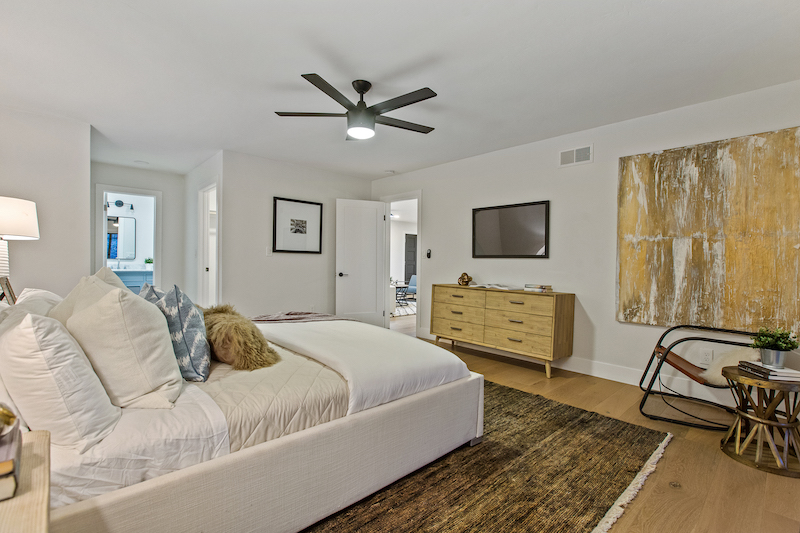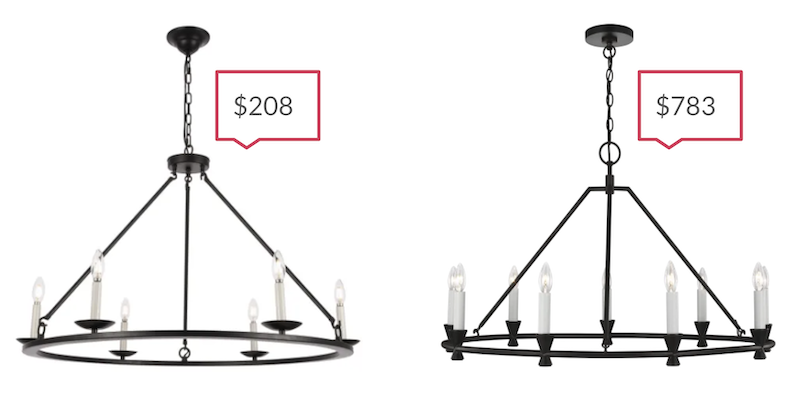How to Give Your Home Some Interior Design Love the Sundae Way
While Sundae is best known for helping our customers sell their houses off-market for the highest price, our work doesn’t end there. When we take on a renovation project, our goal is to restore the home to like-new quality and comfort for a new owner to enjoy and call home. Our guiding philosophy is to preserve the original character and soul of the house while giving it a beautiful and functional update. We believe this adds value to the neighborhood and surrounding community, and makes our customers proud.
Whether you are planning a renovation, preparing your house for a sale, or just need some simple tips to refresh your space, you’ll want to maximize your resale value with any investment in your home. From the construction and project management experts at Sundae, we’ve compiled the following list of suggestions and best practices for updating your home.

Make the most of your space
First and foremost, we focus on making sure that the home flows in a way that would be desirable to most buyers. This means taking a close look at the floor plan to see if we can make any improvements and create more uninterrupted space. There are plenty of free tools online to help you plot the design of your rooms, but here are some good rules of thumb for assessing three key areas of the house.
1. Connect the kitchen with the rest of the house
The kitchen is the heart of the home and, as such, can make or break a sale. It’s often what home shoppers look at first, so it’s important to make sure it’s appealing to current buyers. Older kitchens are often boxed in and cut off from the rest of the house, so consider opening yours up to the adjacent rooms to improve flow between living and eating/cooking spaces. Thoughtful touches like a kitchen island for food prep and informal meals can go a long way.
2. Elevate and enhance the master suite
Because the buyer is almost always the person who inhabits the master suite, it’s worth your time and effort to make this space as impressive as possible. Focus on creating a luxurious feel with an attached, updated bathroom, ample closet space, and plenty of room for a king or queen bed.

3. Optimize the bedroom to bathroom ratio
One common challenge with older homes is that the bed to bath ratio is often out of sync with the desires of modern buyers. You might, for example, see three or four bedrooms with only one shared full bathroom among them. If that is the case in your home, try to reach the optimal bed/bath count for the home’s existing square footage. For example, adding a second bathroom can make your house fit the more desirable mold of a three bedroom, two bathroom property. For this type of update, consider making the second bathroom part of the master suite.
Let the “bones” inspire you, but keep the market in mind
One great aspect of older homes is that they often have unique features and unusual flourishes that make them special. We believe it’s important to let the bones of the house inspire the finished design, so we aim to preserve key elements that retain the home’s original character.
 For example, craftsman style homes are common in California, and since many were built more than 100 years ago, we often find them in need of serious TLC. When we address properties like these, we make an effort to preserve prized architectural features like crown moulding and built-in storage. For the areas being updated we will make finish selections that are relevant to today’s buyer while trying to stay true to the character of the home.
For example, craftsman style homes are common in California, and since many were built more than 100 years ago, we often find them in need of serious TLC. When we address properties like these, we make an effort to preserve prized architectural features like crown moulding and built-in storage. For the areas being updated we will make finish selections that are relevant to today’s buyer while trying to stay true to the character of the home.
Note that when it comes to finish selections such as paint, flooring, and tile, it’s always a good idea to do some market research. Try to get an understanding of the “trendiness” level of your area by looking at which homes are selling quickly and at a premium. Use websites like Zillow, Trulia, or Realtor.com to read the price history of nearby homes. This will help you get a better sense of the styles and features that are appealing in your market so you can make sure your home is current and relevant to buyers.
Further reading: Home renovations with the highest ROI
Beautiful and budget-friendly are not mutually exclusive
Here is something that has not always been true, but certainly is now: you don’t have to sacrifice style to stay within a reasonable budget. It’s tempting to buy expensive materials because they’re what catch your eye in a magazine or TV show. But with a little time and energy, it is almost always possible to find or create something similar that is both beautiful and affordable.
This doesn’t mean you have to skimp on quality. It’s all about choosing where to spend your money and where to save. Here are a few tips to keep in mind:
- Consult design blogs for ideas. This list of design blogs offers tons of inspiration for home improvement projects that are both trendy and budget-friendly.
- Set your budget and work backwards. It’s important to set a realistic budget for yourself in order to know where to splurge and where to save. Using spreadsheets and calculating material costs ahead of time will help you narrow down decisions and keep your spending in check.
- Always comparison shop. If you see a fixture or furnishing you like, look at multiple retailers to see who has the best price and where you might find low-cost alternatives with a similar style and get that look for less! (In the image below, the chandelier on the right is from premiere lighting distributor Circa Lighting while the similar one on the left is available at Build.com).

- Play with pattern. A fun design hack is using inexpensive material but installing it in a unique way. For example, there are many different ways to install a classic subway tile that will add interest to your remodel at a minimal cost.
- Remember that less is more. Focus on simple design that will stand the test of time. Personal touches and color can be brought in with decor and furnishings. When it comes to finishes such as tile and paint, neutral tones are sure to please you and future buyers alike.
- Save money on the back end. Sometimes it may be worth it to invest in an expensive product or appliance if it reduces other expenses or appreciates in value. For example, many environmentally friendly home products reduce utility bills and stay in high demand with eco-conscious home buyers, thus paying off the investment in the long run. Consider ceiling fans, energy efficient lighting fixtures, and low-flow faucets and shower heads.
Ready to Get Started?
Sell as-is. Pay zero fees to Sundae. Move on your time. No repairs, cleanings, or showings.
